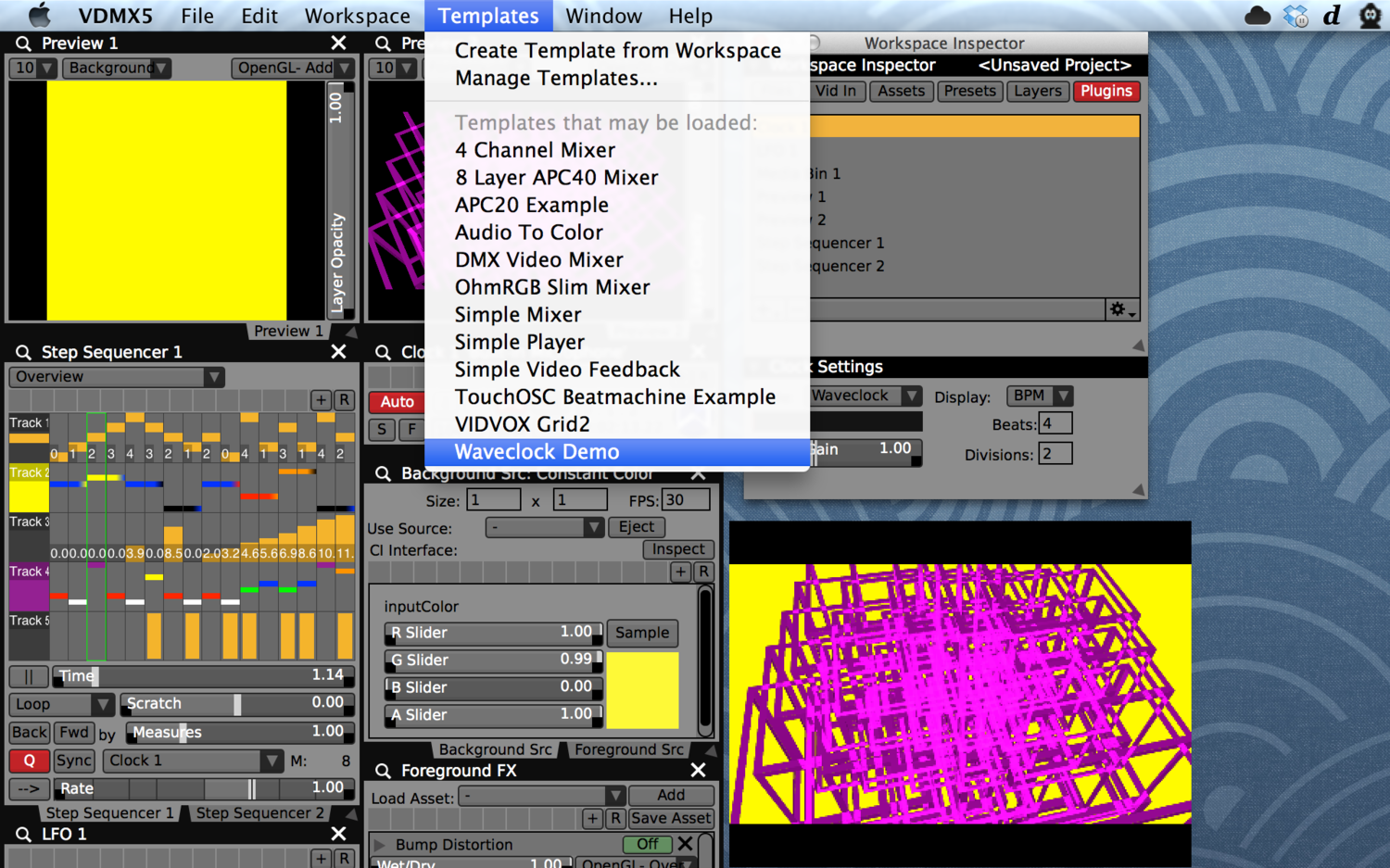

Made it easy to automate things like pan/tilt for moving head lights, in parallel with controlling Madmapper. There may be devices to convert Artnet to standard DMX and enable Vezer to do this, but I found it easier to use the DMXIS plugin for Madmapper, combined with the DMXIS usb-to-dmx box. Such as low-tech DMX lights, as opposed to Artnet ones like LEDs. This also works if you're changing the tempo on the fly (through Ableton + MIDI controller).Īnother reason I switched to Ableton from Vezer, is that I couldn't control regular DMX fixtures from Vezer. Using the automation built into Ableton Live, you can change the tempo for certain parts of your set and Madmapper will automatically adjust to the new tempo. I usually have four or five simultaneous tracks tracks in Ableton (MIDI tracks, but they aren't sending MIDI), each of which is sending OSC commands for a certain row of cues in MM, using the same M4L patch.Ībleton Live can send MIDI clock signals, but I usually use the Ableton Link feature to sync the tempo with Madmapper (MM has direct support for Ableton Link). There are a few publicly available patches out there, including ones specifically for Madmapper, but the possibilities are really endless with M4L inside of Ableton Live - and you can build it visually, without having to write code. It certainly isn't the cheapest solution, but Max-for-Live (M4L) makes it easily to build patches that send OSC commands (or MIDI nodes) to Madmapper. I tried Vezer a while back, but settled on Ableton Live Suite for controlling madmapper - Vezer is a bit limited in the audio department and I make heavy use of Ableton's warping to align beats with the timeline grid in there. Without a time base sync between madmapper and Veźer, Qlab was quicker to set up and troubleshoot (IMO). If I had the time I could route the MTC through Osculator, correct the values, and then plug it back into madmapper, but stacking all these applications is not ideal.ĭespite Veźer's functionality and OSC query, I found it easy enough to copy the OSC address in madmapper and paste it directly into Qlab. Note: I did get madmapper to sync to an MTC clock, but it ran 1/4 the speed it should. I wish there was an easier way, but without a cross-application sync function, madmapper won't sync across timecode. I basically use Qlab to hit play and then count seconds/minutes, until it executes the next action. Since Madmapper does support MTC or a timecode based sync.
#VDMX OSC UPDATE#
* incoming osc message are forwarded to the oscEvent method.I'll post an update to this since no one else has chimed in.Ĭurrently, I am using QLab to automate an entire show with a hybrid of madmapper, DMX control, LED Pixel mapping, Live cameras with interactivity through OpenCV (thanks to Char Stiles code), and control OSC fade in and out through time intervals. MyMessage.add("osc.udp://localhost:9960") /* add an int to the osc message */ OscMessage myMessage = new OscMessage("/ping")

* in the following different ways of creating osc messages are shown by example */ * and the port of the remote location address are the same, hence you will * nd() when sending osc packets to another computer, device, * start oscP5, listening for incoming messages at port 12000 */
#VDMX OSC HOW TO#
* example shows how to send and receive osc messages. The SL OSC documentation on pings and such are beyond my current level of understanding.Īny help, tips, hints would be very helpful
#VDMX OSC CODE#
I'm trying to make this work with the build-in OSC capabilities of SL AU and VDMX, I'm not at a level of being able to code any custom intermediary translators/software at this point. I'm not even sure what port I should be listening to for incoming OSC messages from SL AU into VDMX. Is listening to SooperLooper's AU OSC messages this way even possible? Is communication locked between Ableton and SL, they currently connect on port 10051 which is then unavailable to VDMX since it's being used. (Using something like loop_pos or out_peak_meter would be great as visual control parameters) I'd like to listen to OSC messages being sent out of SooperLooper and map them to controls in VDMX.
#VDMX OSC SOFTWARE#
I'm also running VJ software (VDMX) on the same machine which can send and receive OSC messages.
#VDMX OSC MAC OS#
I'm running SooperLooper as an AU plugin in Ableton Live 9 on Mac OS 10.8.5


 0 kommentar(er)
0 kommentar(er)
